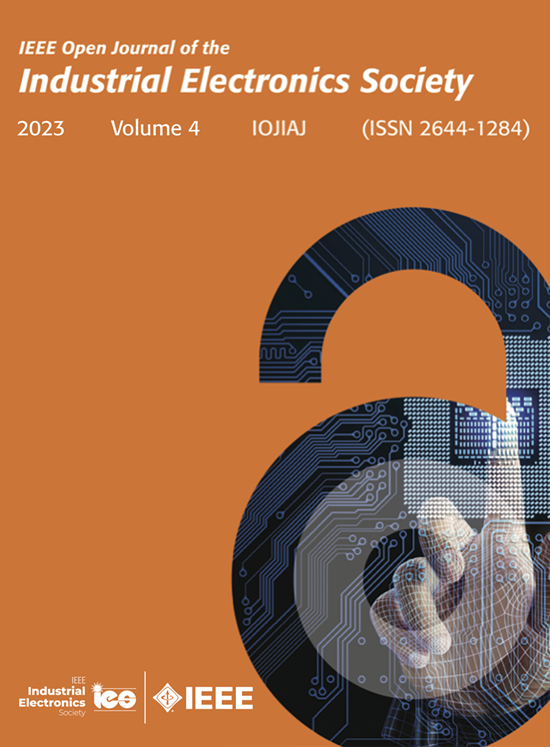考虑时空动态和综合稳定性指标的并网逆变器策略布局
IF 4.3
Q1 ENGINEERING, ELECTRICAL & ELECTRONIC
IEEE Open Journal of the Industrial Electronics Society
Pub Date : 2025-02-04
DOI:10.1109/OJIES.2025.3538480
引用次数: 0
摘要
并网逆变器(gfmi)的战略部署对于充分发挥其稳定电网的潜力至关重要。否则,在网络扰动下,gfmi的空间分配规划不当可能会威胁到整个系统的稳定性。考虑到现代电力系统的各种稳定性和时空方面,迫切需要开发一个强大的、多维的GFMI放置和评估框架。本文通过引入一个新的GFMI放置框架来解决这一需求,该框架考虑了转换器接口的可再生能源的时空方面和新提出的GFMI放置指数。采用一种新的混合场景约简算法,通过减少场景数量来捕获具有高概率发生的时空方面的实际范围。此外,所提出的复合GFMI放置指数封装了网络稳定性的不同方面,精确地说,频率和电压刚度/稳定性分别由频率偏差指数(FDI)和阻尼比指数(DRI)表示。通过动态仿真,将GFMI部署在具有变流器接口的风力发电机的改进IEEE-39总线网络的战略位置,验证了所提出的GFMI放置策略的性能。动态仿真结果表明,与仅依赖FDI或DRI相比,所提出的GFMI排名系统可以有效地识别最佳GFMI位置,从而有助于保持高RE渗透水平的现代电力系统的稳定性。本文章由计算机程序翻译,如有差异,请以英文原文为准。
Strategic Placement of Grid-Forming Inverters Considering Spatiotemporal Dynamics and Composite Stability Index
The strategic deployment of grid-forming inverters (GFMIs) is imperative to fully leverage their potential to stabilise the grid. Otherwise, poorly planned spatial allocation of GFMIs could threaten the overall system stability under network disturbances. There is an urgent need to develop a robust and multidimensional framework for GFMI placement and evaluation, considering various stability and spatiotemporal aspects of modern power systems. This article addresses this need by introducing a new GFMI placement framework considering spatiotemporal aspects of converter-interfaced renewables and a newly proposed GFMI placement index. The practical range of spatiotemporal aspects with a high probability of occurrence is captured by a reduced number of scenarios derived from a novel hybrid scenario reduction algorithm. Furthermore, the proposed composite GFMI placement index encapsulates distinct aspects of network stability, precisely, frequency and voltage stiffness/stability represented by the frequency deviation index (FDI) and the damping ratio index (DRI), respectively. The performance of the proposed GFMI placement strategy is validated through dynamic simulations by deploying GFMIs at strategic locations in a modified IEEE-39 bus network with converter-interfaced wind generators. The dynamic simulation results revealed that the proposed GFMI ranking system effectively identifies the best GFMI positions in contrast to relying solely on FDI or DRI and, thereby, can assist in preserving the stability of modern power systems with high RE penetration levels.
求助全文
通过发布文献求助,成功后即可免费获取论文全文。
去求助
来源期刊

IEEE Open Journal of the Industrial Electronics Society
ENGINEERING, ELECTRICAL & ELECTRONIC-
CiteScore
10.80
自引率
2.40%
发文量
33
审稿时长
12 weeks
期刊介绍:
The IEEE Open Journal of the Industrial Electronics Society is dedicated to advancing information-intensive, knowledge-based automation, and digitalization, aiming to enhance various industrial and infrastructural ecosystems including energy, mobility, health, and home/building infrastructure. Encompassing a range of techniques leveraging data and information acquisition, analysis, manipulation, and distribution, the journal strives to achieve greater flexibility, efficiency, effectiveness, reliability, and security within digitalized and networked environments.
Our scope provides a platform for discourse and dissemination of the latest developments in numerous research and innovation areas. These include electrical components and systems, smart grids, industrial cyber-physical systems, motion control, robotics and mechatronics, sensors and actuators, factory and building communication and automation, industrial digitalization, flexible and reconfigurable manufacturing, assistant systems, industrial applications of artificial intelligence and data science, as well as the implementation of machine learning, artificial neural networks, and fuzzy logic. Additionally, we explore human factors in digitalized and networked ecosystems. Join us in exploring and shaping the future of industrial electronics and digitalization.
 求助内容:
求助内容: 应助结果提醒方式:
应助结果提醒方式:


